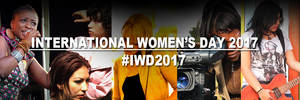2nd TeachHer Regional Training for Africa Launches in Kenya
Over 80 teachers, administrators, and policy makers from 10 African countries have joined the 2nd TeachHer Regional Training for Africa in Nairobi, Kenya this week.
The TeachHer Initiative, launched in 2016, is a public-private partnership aimed at training teachers and education leaders to encourage girls to pursue Science, Technology, Engineering, Arts and Design, and Math (STEAM) careers. An initiative of the U.S. Delegation to UNESCO, the partnership includes UNESCO (including its field network, country offices, and Category I Institutes such as IICBA), the International Institute for Education, Microsoft, FitBit, the Higher Life Foundation, and others.
In his opening speech to participants, Dr. Fred Matiang’i, Ph.D, EGH, Kenya’s Cabinet Secretary for Education, Science and Technology, highlighted Kenya’s commitment to empowering and motivating girls, noting Kenya’s 94 model STEAM secondary schools aimed at “activating, training, inspiring, and sustaining girl’s enrollment in STEAM-related fields.”
Improving education outcomes for women and girls is a powerful force for achieving transformational progress in developing countries. Women in STEAM careers earn 33 percent more than their non-tech counterparts. However, research shows that if girls are not exposed to STEAM opportunities by the end of middle school, they are unlikely to pursue education and careers in these fields.
This week’s training is the second for Africa and builds upon the August 2016 session held in Addis Ababa, Ethiopia to develop a master core of gender-responsive STEAM teachers. Participants are from Ethiopia, Ghana, Kenya, Nigeria, South Africa, Tanzania, and newly participating states Madagascar, Senegal, Zambia and Zimbabwe. Their educators and policy officials will join training sessions consisting of lectures, group sessions, field visits, and practical activities hosted by the Centre for Mathematics, Science and Technology Education in Africa (CEMASTEA). A priority of the TeachHer partnership is country ownership. The UNESCO missions from participating states were responsible for nominating country delegations and following up on progress to ensure a sustained country commitment to closing the gender gap in STEAM fields.
Present at the opening event was H.E. Prof. George Godia, Ambassador/Permanent Representative of Kenya to UNESCO, Ms. Ann Theresse Ndong-Jatta, Director of the UNESCO Multisectoral Office for Eastern Africa, Dr. Yokozeki Yumiko, Director of the UNESCO International Institute for Capacity Building in Africa (IICBA) among other dignitaries. Mr. Chris Hegadorn, Charge d’Affaires of the U.S. Mission to UNESCO addressed the event through a video greeting.
The TeachHer Initiative was originally launched in June 2016 by the then Second Lady of the United States, Dr. Jill Biden, and UNESCO Director General, Irina Bokova, with the aim of creating a master corps of Science, Technology, Engineering, Arts/Design and Math (STEAM) teachers, administrators, and policy makers who will inspire and empower girls to be STEAM leaders.
This initiative was founded upon the unanimous endorsement of UNESCO Executive Board resolution 199/EX 26 entitled “UNESCO’s role in encouraging girls and women to be leaders in Science, Technology, Engineering, Art/Design, and Math fields.” The resolution was co-sponsored by nearly 80 Member States to solidify and amplify the importance of this issue, and to showcase the value of public and private joint leadership, enjoined by UNESCO, to achieve concrete results. More information about TeachHer can be found on the U.S. Mission website.
<- Back to: Single view Gender






